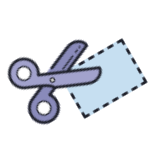Hey folks. First post here. Thanks for having me!
I had a Les Lius years ago. Once Lovepedal came out with the High Power Tweed Twin, I sold the Lius and bought the HPTT. The Les Lius didn't quite work for me personally. Something about not being able to control much about the boost side made it sort of pointless for my needs.
About 10 years and a couple dozen overdrives later, I just can't get the HPTT off my board. It does exactly what I want and it's my favorite drive.
Lovepedal claimed the HPTT was simply the most popular setting on the Lius (Twin) and put it in a smaller enclosure without the extra boost and added a tone toggle.
So my question is, has anyone successfully modded the Twill Deluxe into the High Power Tweed Twin? What would it take. Seems like it would be simple enough, but I feel like I'm missing something.
Thanks again!
- Josh
I had a Les Lius years ago. Once Lovepedal came out with the High Power Tweed Twin, I sold the Lius and bought the HPTT. The Les Lius didn't quite work for me personally. Something about not being able to control much about the boost side made it sort of pointless for my needs.
About 10 years and a couple dozen overdrives later, I just can't get the HPTT off my board. It does exactly what I want and it's my favorite drive.
Lovepedal claimed the HPTT was simply the most popular setting on the Lius (Twin) and put it in a smaller enclosure without the extra boost and added a tone toggle.
So my question is, has anyone successfully modded the Twill Deluxe into the High Power Tweed Twin? What would it take. Seems like it would be simple enough, but I feel like I'm missing something.
Thanks again!
- Josh







